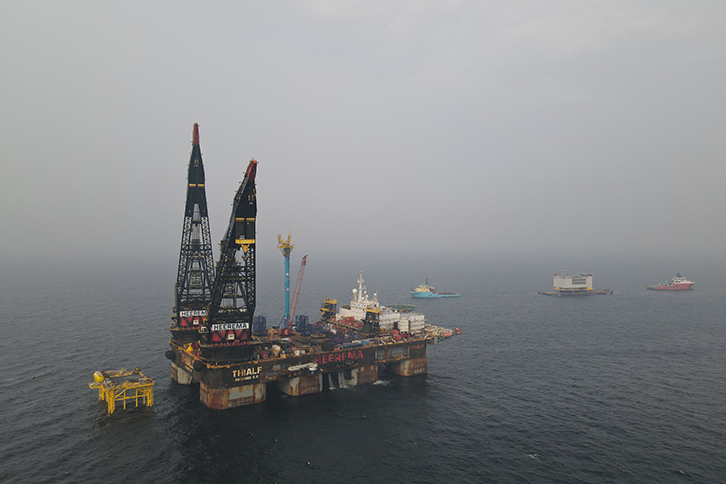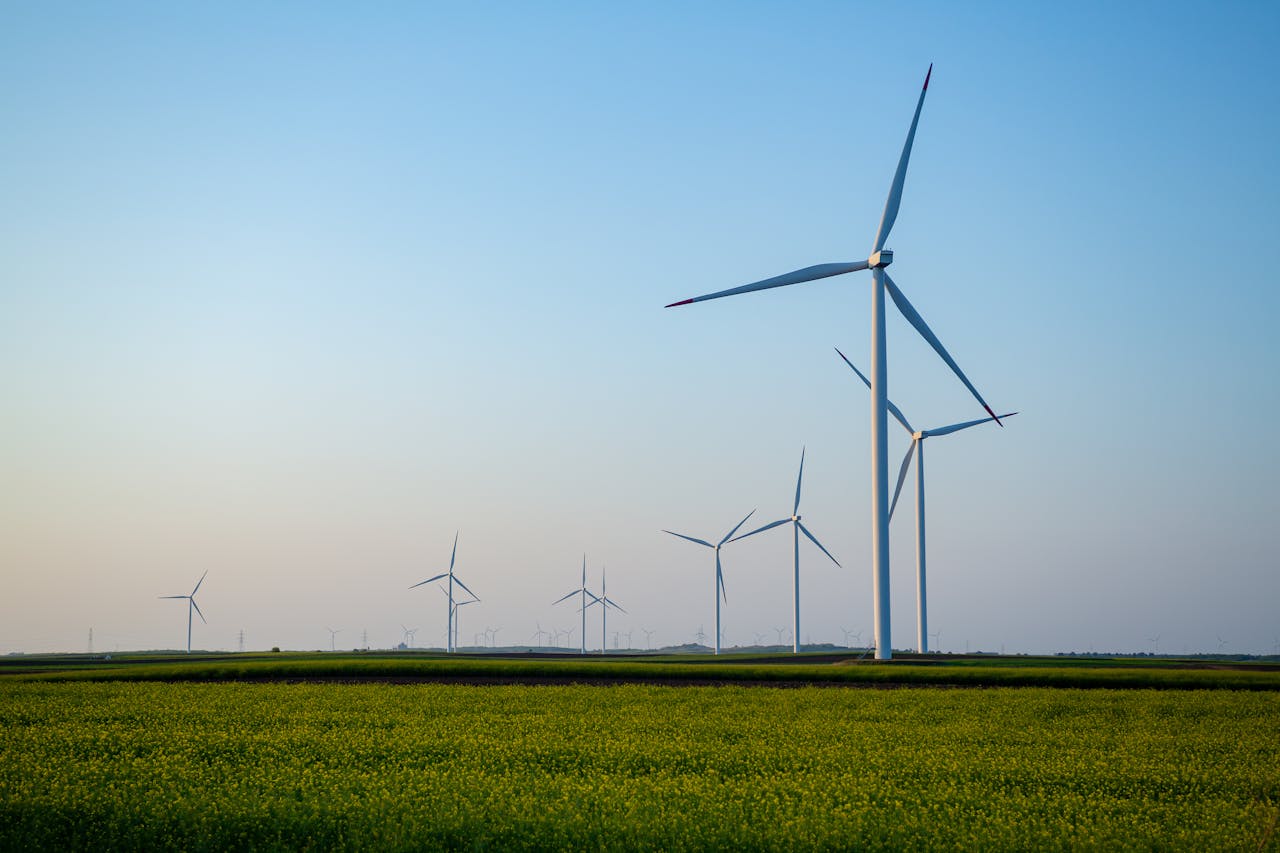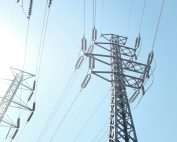Berlin, 23 February 2023. Baltic Eagle´s offshore substation topside (OSS) has been successfully installed. The operation was executed by Heerema Marine Contractors using the Thialf installation vessel. The jacket foundation had been placed on site in October 2022.
The role of the OSS is to collect the electricity generated by the wind turbines and transform the supply voltage before feeding it into the onshore power grid at the Lubmin grid interconnection point. The installation involved the heaviest lifting operation for the Baltic Eagle project with a total estimated net weight of more than 4,200 tonnes. Iberdrola now starts the offshore phase to make the OSS ready for energization. This will be followed by the installation of the monopiles to which the wind turbines are attached with transition pieces.
The monopiles have been manufactured by the regional company EEW SPC from Rostock. Once the wind farm is connected to the grid, the electricity generated by its wind turbines will be delivered via inter-array cables to the offshore substation where it is then transformed from 66 kV to 220 kV and transmitted via two high voltage subsea cables across the 90 km distance to the landing point at Lubmin into the 50Hertz transmission grid. The 220 kV submarine cables were already laid in 2021 and 2022 and deposited on the seabed at a safe distance from the platform position. The next step will be to move the two cable ends into the transformer platform in the second quarter of this year.
In May 2021, Iberdrola and 50Hertz signed an agreement to cooperate on the construction, installation and commissioning of the OSS for Baltic Eagle offshore wind farm, which is currently, being built in German waters of the Baltic Sea. Iemants-Fabricom was responsible for the manufacturing of all structural elements of the substation, the marine contractor Heerema for transportation and installation, and Siemens Gas and Power for the delivery of all main electrical equipment for Iberdrola’s low-voltage part of the OSS.
Iris Stempfle, Managing Director of the Offshore Division and Deputy CEO of Iberdrola Deutschland, said: “The offshore substation is a key piece of technology for supplying sustainable energy to hundreds of thousands of households and for the decarbonisation of German industry. We are very pleased to have achieved this central milestone in close cooperation with 50Hertz as planned.”
Stefan Kapferer, CEO of 50Hertz: “The Baltic Sea still has a lot of potential and 50Hertz, together with partners such as Iberdrola, will help to achieve the German and European offshore targets: I congratulate everyone involved on the successful installation of the substation Baltic Eagle. Now we are once again a big step closer completing the Ostwind 2 grid connection project until next year.”
Ostwind 2 is the project to connect the Baltic Sea wind farms Arcadis Ost 1 and Baltic Eagle to the German high voltage grid. To transfer the power from the two wind farms, 50Hertz is building three submarine cable systems that will transmit a total of 750 megawatts (MW).
Generating green electricity for more than half a million households
The substation consists of a foundation and a topside housing the transformers as well as electrical equipment. Its four-legged steel jacket foundation weighs approximately 2,900 tonnes and is fastened with two hammered piles at each leg. The topside features a closed multi-storey module of five decks.
As one of the key elements of the Baltic Eagle windfarm, the substation is tasked with collecting and exporting the entire electricity estimated to account for ca. 1.9 TWh per year. This production will be able to sustainably meet the demand of more than half a million homes and to avoid the emission of 800,000 tonnes of CO2 into the atmosphere each year.
Promoting Europe’s renewable energy industry and creating jobs
The Baltic Eagle offshore wind farm is located northeast of the Rügen island off the Pomeranian coast in the Baltic Sea and is planned and operated from the local Port of Mukran in Sassnitz. With its 50 wind turbines of 9.5 MW capacity each, it will have a capacity of 476 MW. The wind turbines are to be installed on monopile foundations and will cover an area of 40 km2. Following turbine installation, the wind farm is set to be commissioned in 2024.
Baltic Eagle is part of Iberdrola´s so-called “Baltic Hub” in the Baltic Sea. Together with Wikinger (350 MW) and the planned Windanker (300 MW), the Hub will have an installed capacity of over 1.1 GW by 2026, underpinning the company’s strategic focus in the Baltic Sea.
Iberdrola and 50Hertz are committed to the German energy transition, promoting green growth and the sustainable transformation of industries across the European Union, including the reindustrialisation and modernisation of shipyard facilities. Working together, both companies contribute to creating high-quality jobs across the whole renewable energy value chain, from the local site on the island of Rügen to regional contractors in Mecklenburg-Vorpommern and European suppliers.
Source: 50Hertz














